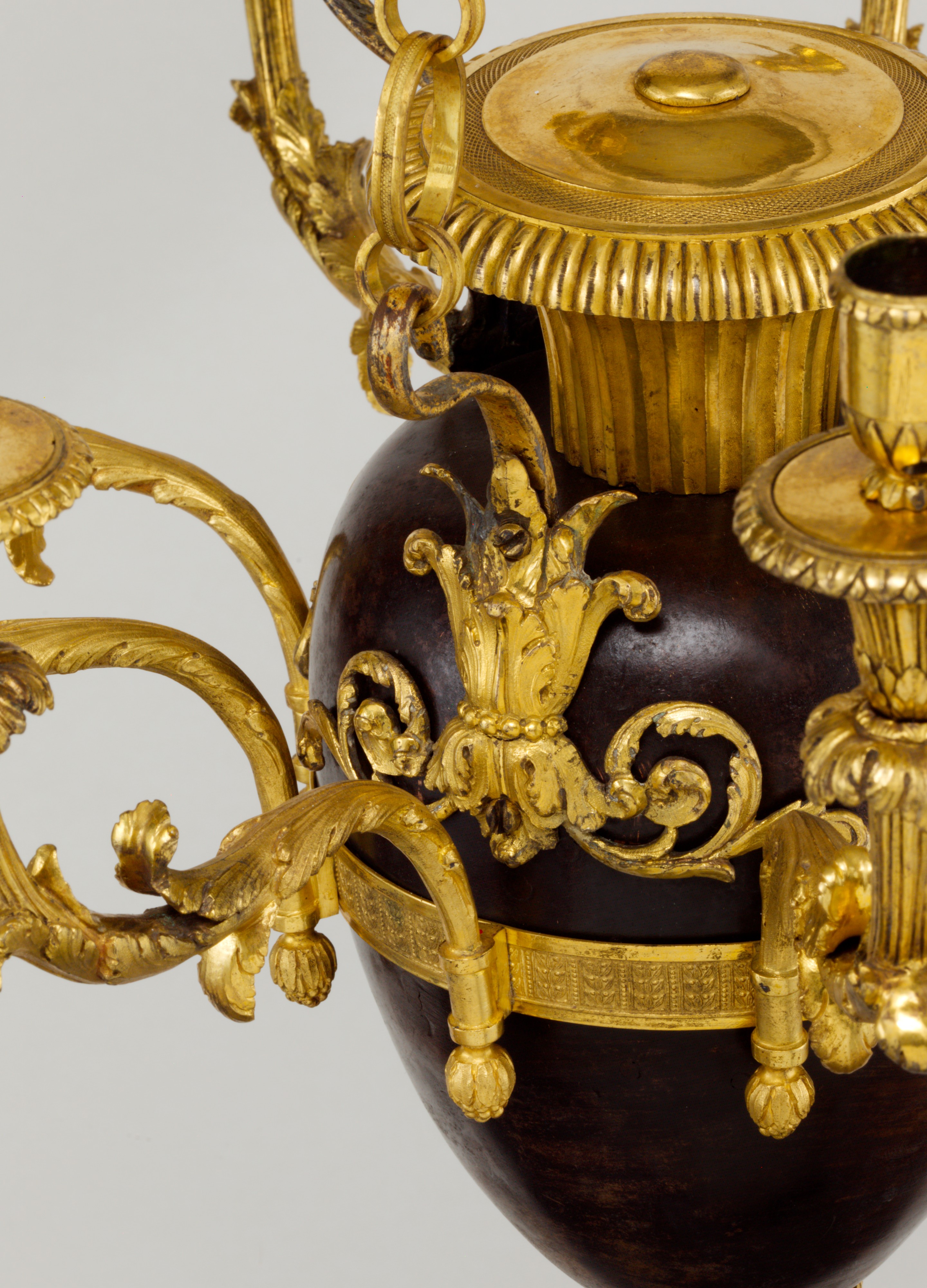Nine-light chandelier
In the era before gas lighting and electricity, candles played a principal role in illuminating the interior of a house. The number and type of candles lit was an indication of the wealth and status of the owner. Beeswax candles burnt cleaner and smelled more pleasant than tallow and were rather expensive. Contemporary travelers and diarists frequently commented on the illumination and cost of brightly lit spaces.
Gilt bronze was extensively used for different types of lighting ranging from standing candlesticks and candelabra to hanging chandeliers and lanterns.
This graceful chandelier has a vase-shaped patinated-bronze body fitted with a fluted neck of gilt bronze. From a gilt-bronze band encircling the vase rise nine S-shaped branches, each decorated with scrolling acanthus-leaf motifs, a flaring drip pan and a candle socket. The chandelier is suspended from gilt-bronze chains.
The combination of patinated metal and gilt bronze used here offered the kind of rich and sophisticated contrast favored during the late eighteenth century.
Due to rights restrictions, this image cannot be enlarged, viewed at full screen, or downloaded.
This artwork is meant to be viewed from right to left. Scroll left to view more.



